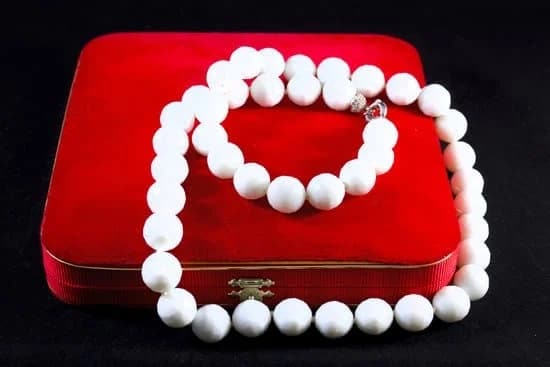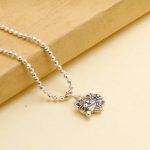African beads for jewelry have a long and storied history, intertwined with the rich tapestry of African culture. These beads hold deep cultural significance and are often used to convey messages, traditions, and stories within different communities. From the intricate craftsmanship to the vibrant colors and symbolic meanings, African beads are a true reflection of the continent’s diverse heritage.
The traditional art of African bead making dates back centuries and involves intricate techniques passed down through generations. Artisans use a variety of materials such as glass, metal, clay, bone, and even seeds to create unique beads that are then used in jewelry making. Each bead is crafted with care and attention to detail, resulting in stunning pieces that embody the essence of African creativity and craftsmanship.
African beads come in a multitude of types, from colorful glass beads to antique trade beads that have been exchanged across continents for centuries. These beads not only serve as decorative elements but also hold deep symbolism and meaning within African cultures. The colors used in these beads often carry specific meanings, representing aspects such as fertility, strength, love, or wealth. Understanding these symbols adds another layer of appreciation to the beauty of African bead jewelry.
The Traditional Art of African Bead Making
The art of African bead making holds a long, rich history that dates back centuries. Traditional African beads are crafted using various techniques and materials, showcasing the skilled craftsmanship of the artisans behind these intricate designs. One of the most fascinating aspects of African bead making is the use of natural materials such as clay, bone, shells, and metals in addition to glass beads. These materials are often sourced locally and hold deep cultural significance within different African communities.
Techniques of African Bead Making
African bead making involves a meticulous process that requires patience and precision. Artisans use techniques such as hand-rolling, molding, carving, and painting to create unique beads with intricate patterns and designs. Each bead is carefully crafted to perfection, reflecting the artisan’s expertise and creativity. The use of ancient techniques passed down through generations adds a sense of authenticity and heritage to African beads for jewelry.
Materials Used in African Bead Making
The diversity of materials used in African bead making is what makes each piece truly special. From colorful glass beads to rustic clay beads, each material brings its own unique texture and character to the finished jewelry piece.
Trade beads, which were historically used as a form of currency in exchange for goods during the colonial period, have also become popular decorative elements in contemporary African bead jewelry. The combination of these traditional materials with modern innovations creates a fusion that showcases the beauty and versatility of African beads for jewelry making.
Types of African Beads Used in Jewelry Making
African beads have been an integral part of jewelry making for centuries, with a wide variety of types being used to create stunning and intricate pieces. From traditional glass beads to trade beads, each type holds its own unique charm and history, making them highly sought after in the world of jewelry design.
Glass Beads
One of the most common types of African beads used in jewelry making is glass beads. These beads are often handmade by skilled artisans using traditional techniques that have been passed down through generations. Glass beads come in a plethora of colors, shapes, and sizes, allowing for endless creativity in designing bespoke pieces of jewelry.
Trade Beads
Trade beads hold a special place in African history as they were once used as a form of currency during the slave trade era. These colorful and intricately designed beads were highly valued and traded across continents. Today, trade beads are still popular in jewelry making for their historical significance and aesthetic appeal. Incorporating trade beads into jewelry designs adds a touch of cultural richness and depth to the piece.
Metal Beads
Metal beads are another type commonly seen in African bead jewelry. These beads can be made from various metals such as brass, copper, or silver, each adding a unique shimmer and texture to the piece. Metal beads are often used as accents or focal points in jewelry designs, enhancing the overall look and feel of the piece. Whether it’s a bold statement necklace or a delicate bracelet, metal beads can elevate any African bead jewelry creation to new heights.
From glass beads to trade beads to metal beads, African bead jewelry encompasses a wide range of materials that reflect the diverse cultural heritage of the continent. Each type carries its own history and symbolism, making them not just accessories but storytellers of rich traditions and vibrant customs. Incorporating these unique African beads into your jewelry collection adds a touch of exotic flair while supporting local artisans who continue to preserve these age-old techniques for future generations to appreciate.
Colors and Meanings in African Beads
African beads have a rich history and cultural significance that dates back centuries. They are not only decorative but also symbolic, with different colors and patterns holding specific meanings in various African cultures. These beads are often used in jewelry-making to convey messages, tell stories, and celebrate traditions.
For example, red beads may symbolize courage and strength, while blue beads could represent peace and spirituality. Understanding the meanings behind these colors adds a deeper layer of appreciation for African bead jewelry.
The symbolism of African beads extends beyond just colors; the shapes and patterns of the beads also carry significance. For instance, certain geometric designs may symbolize unity or fertility in some African communities.
These intricate details not only contribute to the aesthetic appeal of the jewelry but also serve as a form of communication and expression. Whether worn for ceremonial purposes or as everyday adornments, African bead jewelry is a reflection of cultural values and beliefs that have been passed down through generations.
In addition to their symbolic meanings, the use of African beads in jewelry-making also plays a vital role in preserving traditional craftsmanship and supporting local artisans. By incorporating these beads into contemporary designs, designers are able to honor the heritage of African beadwork while introducing it to new audiences around the world.
The demand for authentic African beads has led to ethical sourcing practices that ensure fair compensation for skilled bead makers. As consumers become more conscious of the origins of their jewelry pieces, there is a growing appreciation for the cultural significance of African beads in the global fashion industry.
| Colors | Meanings |
|---|---|
| Red | Courage and Strength |
| Blue | Peace and Spirituality |
| Geometric Designs | Unity or Fertility |
African Beads as a Fashion Statement
African beads have long been admired for their vibrant colors, intricate designs, and cultural significance. In recent years, they have become a popular choice for jewelry designers looking to add a unique touch to their creations. The use of African beads in jewelry not only enhances the overall aesthetic appeal but also holds symbolic meanings that resonate with wearers.
When it comes to incorporating African beads into jewelry designs, the possibilities are endless. From necklaces and bracelets to earrings and anklets, these beads can be used in a variety of ways to create stunning pieces that stand out. Whether you opt for traditional styles or experiment with contemporary designs, African beads can bring a touch of cultural flair to any outfit.
One of the key advantages of using African beads in jewelry is the wide range of colors and patterns available. Each bead is handcrafted using techniques passed down through generations, resulting in unique pieces that tell a story. From earthy tones inspired by nature to bold hues symbolizing strength and courage, the colors of African beads carry deep meanings that add depth to any design.
In today’s fashion landscape, there is a growing interest in sustainable and ethically sourced materials. By choosing African beads for jewelry making, you not only support local artisans and communities but also contribute to the preservation of traditional craftsmanship. With more people seeking meaningful connections to the products they wear, African beads offer a captivating blend of style and cultural heritage that resonates with modern consumers.
Contemporary African Bead Jewelry Trends
One of the key trends in modern African bead jewelry is the use of unconventional materials alongside traditional beads, creating a unique and eclectic look. Artisans are experimenting with materials such as metal, leather, and even recycled elements to add a contemporary twist to their designs. By incorporating these new elements, they are able to push the boundaries of traditional beadwork and appeal to a broader audience looking for one-of-a-kind pieces with a modern flair.
In addition to material experimentation, contemporary African bead jewelry trends also focus on versatility and wearability. Designers are creating pieces that can transition seamlessly from day to night, allowing individuals to express their personal style effortlessly. Whether it’s pairing a beaded necklace with a casual outfit or adding a pop of color with beaded bracelets, these jewelry trends emphasize the adaptability and timeless appeal of African beads for jewelry enthusiasts worldwide.
- Incorporating unconventional materials like metal and leather
- Focusing on versatility and wearability in designs
- Appealing to a broader audience with modern twists on traditional beadwork
Buying Authentic African Beads
African beads have a long history and cultural significance deeply rooted in various African traditions and practices. These beads are not just decorative pieces but also carry symbolic meanings and represent different values within the community. The art of bead making in Africa is a traditional craft that has been passed down through generations, using techniques and materials unique to each region. From Ghana to Nigeria, each country has its own style and methods of creating these intricate beads.
When it comes to sourcing authentic African beads for jewelry making, it is essential to support local artisans and ensure that the beads are ethically produced. By purchasing directly from the artisans or from fair trade organizations, you can contribute to the economic empowerment of these talented craftsmen and women. This not only helps preserve the cultural heritage of African bead making but also promotes sustainable practices within the industry.
One of the most popular types of African beads used in jewelry making is glass beads. These colorful and vibrant beads come in a variety of shapes and sizes, making them versatile for creating stunning jewelry pieces.
Trade beads are another common type of African bead that has a rich history dating back to centuries ago when they were used as currency for trading goods. Today, these antique trade beads add a unique touch to modern jewelry designs, showcasing their historical significance in contemporary fashion trends.
| Benefits of Buying Authentic African Beads | Tips on Sourcing Ethical Beads |
|---|---|
| Preserve cultural heritage | Purchase directly from artisans or fair trade organizations |
| Promote sustainable practices | Verify authenticity and source country of origin |
DIY African Bead Jewelry Projects
African beads have a long and rich history, deeply intertwined with the cultural tapestry of the continent. The traditional art of African bead making encompasses a wide range of techniques and materials, each carefully selected to create stunning pieces of jewelry that carry special meanings and symbolism. From glass beads crafted by skilled artisans to intricate trade beads used for centuries in intercontinental exchanges, the diversity of African beads is truly remarkable.
When it comes to creating your own African bead jewelry at home, the possibilities are endless. By understanding the colors and meanings behind different types of African beads, you can infuse your designs with rich symbolism and tradition.
Whether you prefer vibrant reds symbolizing passion or calming blues representing peace, each color choice adds depth and significance to your creations. Incorporating these elements into your designs not only enhances their visual appeal but also allows you to connect with the cultural heritage behind African beads.
As contemporary fashion trends continue to embrace diversity and individuality, African bead jewelry has become a popular choice for those looking to make a unique statement. By combining traditional techniques with modern styles, designers are able to create captivating pieces that stand out in any setting. Whether you choose to purchase authentic African beads from local artisans or embark on DIY projects at home, incorporating these beautiful elements into your jewelry collection is sure to make a lasting impression.
Frequently Asked Questions
What Do African Beads Symbolize?
African beads are rich in symbolism, often representing cultural heritage, social status, spirituality, and personal beliefs. They can also symbolize important life events such as births, marriages, and other milestones.
What Are the Different Types of African Beads?
There are various types of African beads, including trade beads which were used historically for trade with Europeans. Other types include powder glass beads, seed beads, glass beads, wooden beads, bone beads, metal beads, and clay beads.
Which Tribe in Africa Is Famous for Their Beaded Jewellery?
The Maasai tribe of East Africa is renowned for their intricate and colorful beaded jewelry. Maasai women create beautiful beadwork as part of their traditional attire, incorporating symbolic patterns and colors that have special meanings within their culture.

Welcome to my jewelry blog! My name is Sarah and I am the owner of this blog.
I love making jewelry and sharing my creations with others.
So whether you’re someone who loves wearing jewelry yourself or simply enjoys learning about it, be sure to check out my blog for insightful posts on everything related to this exciting topic!





